Venice is one of Italy’s most popular destinations for good reason. Built across more than 100 small islands, this floating city has stunning architecture, charming canals instead of streets, and a romantic atmosphere. While the city can get crowded with tourists, visiting Venice is an experience like no other.
| No. | Activity | Description |
|---|---|---|
| 1 | Gondola Ride Through the Canals | Experience a classic Venetian gondola ride through the city’s iconic canals. |
| 2 | St. Mark’s Square | Explore Venice’s most famous square, surrounded by historic landmarks. |
| 3 | Doge’s Palace | Tour this historic palace, a symbol of Venetian power and architecture. |
| 4 | St. Mark’s Basilica | Visit this renowned Byzantine-style cathedral with spectacular mosaics. |
| 5 | Jewish Ghetto | Discover the world’s oldest Jewish Ghetto in the Cannaregio district. |
| 6 | Rialto Bridge | Walk across this iconic bridge spanning the Grand Canal. |
| 7 | Gallerie dell’Accademia | Explore a museum showcasing the best collection of Venetian art. |
| 8 | Day Trip to Nearby Islands | Visit islands like Murano and Burano, known for glass-making and colorful houses. |
| 9 | Back Streets Exploration | Wander through the maze of Venice’s narrow streets and alleys. |
| 10 | Evening Gondola Ride | Enjoy a romantic gondola ride in the evening with traditional Italian songs. |
| 11 | Carnevale di Venezia | Experience the city’s famous pre-Lenten carnival with parades and costumes. |
| 12 | La Fenice Opera House | Attend a performance at this historic and prestigious opera house. |
| 13 | Venetian Masks Shopping | Explore shops selling traditional Venetian masks. |
| 14 | Small Islands Exploration | Visit lesser-known islands for a peaceful experience. |
| 15 | Cicchetti and Wine | Enjoy Venetian tapas and local wine in traditional bàcari. |
In 2024, make sure to include these 15 amazing things to do in Venice on your Italian itinerary:
Take a Gondola Ride Through the Canals

Name and Location: Gondola Rides, Along the canals of Venice, Italy
History and Significance: Gondolas have been the main form of transport in Venice for over 1,000 years. Today, they offer a iconic way to see the city from its canals.
What to Expect: Gliding peacefully along the canals while your gondolier sings Italian songs. Seeing canal-side palaces, churches, and under little bridges.
Visitor Information: Gondola rides can be taken throughout Venice. Agree on price beforehand. Daytime or evening rides available. About 30-50 minutes.
Gliding through Venice’s canals in a sleek black gondola is perhaps the quintessential Venetian experience. With more than 170 canals winding through the city, you’ll have plenty of opportunities to get out on the water. Gondolas hold up to six people, so you can share the experience with travel companions or opt for a private ride for two.
As your gondolier steers you under the city’s iconic bridges and past waterfront palazzos, you’ll get a unique perspective to appreciate Venice’s intricate system of canals. Though a gondola ride is not cheap, it’s worth splurging on this traditional Venetian pastime at least once during your visit.
Wander Through St. Mark’s Square

Name and Location: Piazza San Marco, Venice, Italy
History and Significance: St. Mark’s Square has been the religious and political center of Venice for over 900 years. Lined by iconic monuments and cafes.
What to Expect: Soaking in views of St. Mark’s Basilica, the Campanile bell tower, Doge’s Palace and the city’s buzzing social hub.
Visitor Information: In central Venice, easy to locate. Always crowded with tourists and pigeons. Cafes overpriced. Go early or late.
The bustling, beautiful Piazza San Marco (St. Mark’s Square) is Venice’s most famous public square. It’s surrounded by iconic sights like St. Mark’s Basilica, the Campanile bell tower, the Doge’s Palace, and the ornate Procuratie buildings.
As you weave through the crowds, stop to people-watch, admire the Byzantine-influenced architecture, visit the basilica, and sip an espresso at one of the square’s many cafés. Don’t forget to look up—you may spot one of the square’s hundreds of pigeons taking flight. An evening stroll here after the crowds thin out is especially atmospheric.
Explore the Doge’s Palace

Name and Location: Doge’s Palace, Piazza San Marco, Venice, Italy
History and Significance: The Doge’s Palace was the political center and residence of the Venetian ruler for over 800 years. Magnificent architecture and art inside.
What to Expect: Taking a guided tour to see lavish rooms, Bridge of Sighs, armory and weaponry. Learning about Venice’s complex political history.
Visitor Information: Next to St. Mark’s Basilica. Open daily April-October. Ticket includes Correr Museum. Arrive early or book timed tickets.
The Palazzo Ducale (Doge’s Palace) was the political center of the Venetian Republic for over 1,000 years. This elaborate Gothic palace was the residence of the Doge, who ruled Venice, and the palace interior gives you a glimpse into the power and wealth of the Venetian state.
On a guided tour, you can view incredible art by Titian and Tintoretto, walk across the Bridge of Sighs, and visit spacious state rooms and chambers. The history of Venice comes alive within the walls of this impressive palace complex. Book skip-the-line tickets in advance to maximize your time inside.
Tour St. Mark’s Basilica
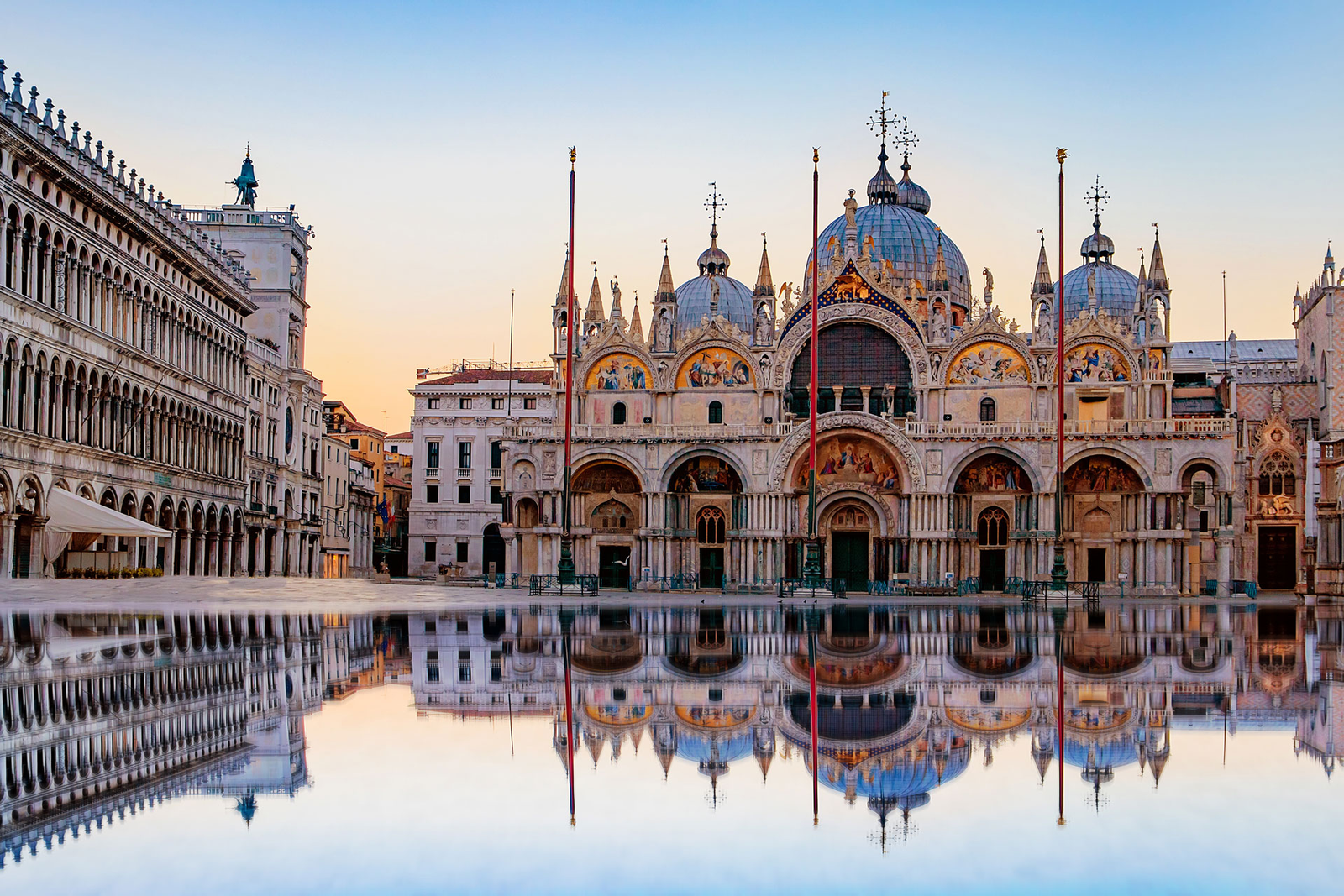
Name and Location: St. Mark’s Basilica, Piazza San Marco, Venice, Italy
History and Significance: This Byzantine-style basilica housing St. Mark’s tomb has been Venice’s cathedral since the 9th century. Resplendent with gold mosaics.
What to Expect: Taking in the dazzling mosaics, marble floors, ornate altar and Pala d’Oro altarpiece encrusted in gems. Often crowded.
Visitor Information: Located in Piazza San Marco. Open daily. Dress codes enforced. Tickets free to enter but fee for basilica museum.
Right next to the Doge’s Palace is St. Mark’s Basilica, the most famous church in Venice. This Byzantine-style cathedral dates back to the 11th century and dazzles visitors with its glittering gold mosaics covering over 8,000 square meters of ceiling space.
Wherever you look, you’ll find ornate details, from the marble floors and columns to the carved iconostasis separating the chancel from the nave. Go up to the balcony for excellent views of the church interior. As one of Venice’s most popular sites, be prepared for crowds and dress respectfully—no shorts or bare shoulders allowed.
Get Lost in the Jewish Ghetto

Name and Location: Jewish Ghetto, Cannaregio District, Venice, Italy
History and Significance: The area where Venice’s Jewish population was segregated starting in 1516 until after World War II. Home to Jewish sights.
What to Expect: Peeling back history while walking the area’s quiet streets. Visiting synagogues and the Jewish Museum of Venice. Kosher cuisine.
Visitor Information: Located in northern Venice. Guided tours available. Synagogues only open for services and some days. Modest dress required.
Venice’s Jewish Ghetto in Cannaregio is the oldest Jewish ghetto in the world, created in 1516 when the ruling Doge confined Jews to live in a small, enclosed island neighborhood. Today, it’s a vibrant area to explore, with synagogues, shops, kosher restaurants, and museums that commemorate Venice’s Jewish community and heritage.
Wandering through the neighborhood’s narrow streets and squares, you’ll get a taste of residential Venice away from the tourist crowds. Look for historic sights like the Jewish Museum and Europe’s oldest surviving synagogue. The area really comes to life after dark.
Cross the Rialto Bridge

Name and Location: Rialto Bridge, Over the Grand Canal, Venice, Italy
History and Significance: The iconic Rialto Bridge is one of four bridges spanning Venice’s Grand Canal. First built in the 12th century, it remains a vital artery.
What to Expect: Crossing the bustling bridge for gorgeous Grand Canal views. Checking out market stalls. Seeing engineering marvel up close.
Visitor Information: In central Venice. Access from either side of Grand Canal. No fee. Crowded all day. Watch for pickpockets.
Spanning the Grand Canal, the iconic Rialto Bridge has been one of Venice’s defining landmarks for centuries. The current elegant stone bridge dates from the late 16th century. With its rows of shops beckoning visitors, it epitomizes the city’s mercantile heritage.
Crossing the bridge is a popular activity—stop midpoint to gaze out at the bustling canal traffic and admire Grand Canal palaces on either side. You can also head down the steps to the waterfront for a close-up perspective. When it gets busy, the view from above offers an ideal perch for photos.
Explore Gallerie dell’Accademia
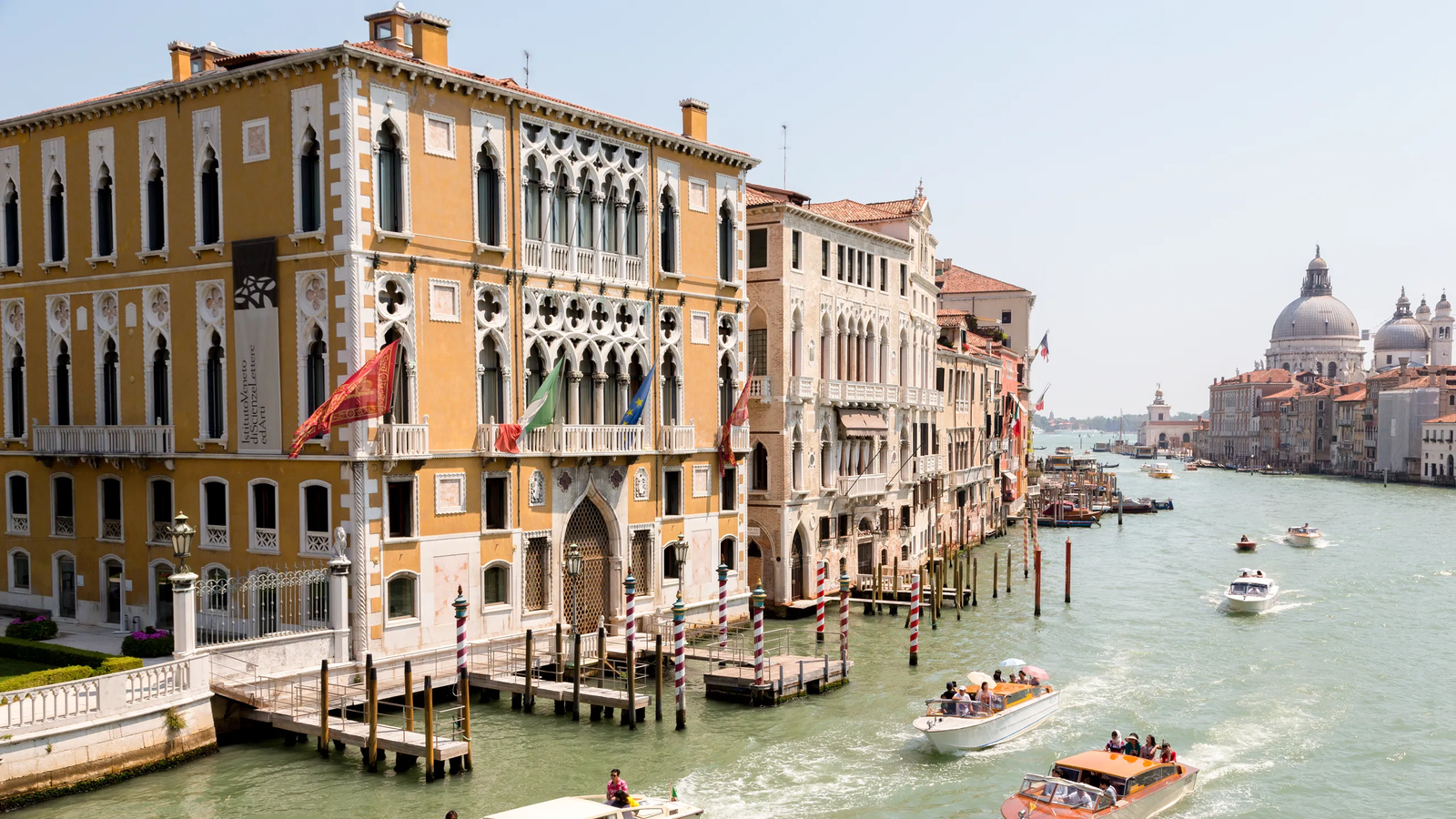
Name and Location: Gallerie dell’Accademia, Venice, Italy
History and Significance: Premier museum housing Venice’s finest collection of pre-19th century art. World renowned for Italian Renaissance masterpieces.
What to Expect: Admiring powerful works by Titian, Veronese, Tintoretto, Canaletto, Bellini and others. Audio guides available.
Visitor Information: On the south bank of the Grand Canal. Open daily. Admission fee. Advance reservations recommended. Allow 2-3 hours.
Venice has impressive art museums, and the Gallerie dell’Accademia should be high on your list. Housed in a former religious complex, it contains the world’s best collection of Venetian art. Highlights include canvases by Bellini, Titian, Tintoretto, Veronese, and Canaletto.
There are also works by Venetian masters displayed in lavish rooms of the old Scuola Grande di Santa Maria della Carità. With so much to see, focus on the highlights and take time to appreciate the grand masters who defined the colorful Venetian style of painting.
Take a Day Trip to the Islands
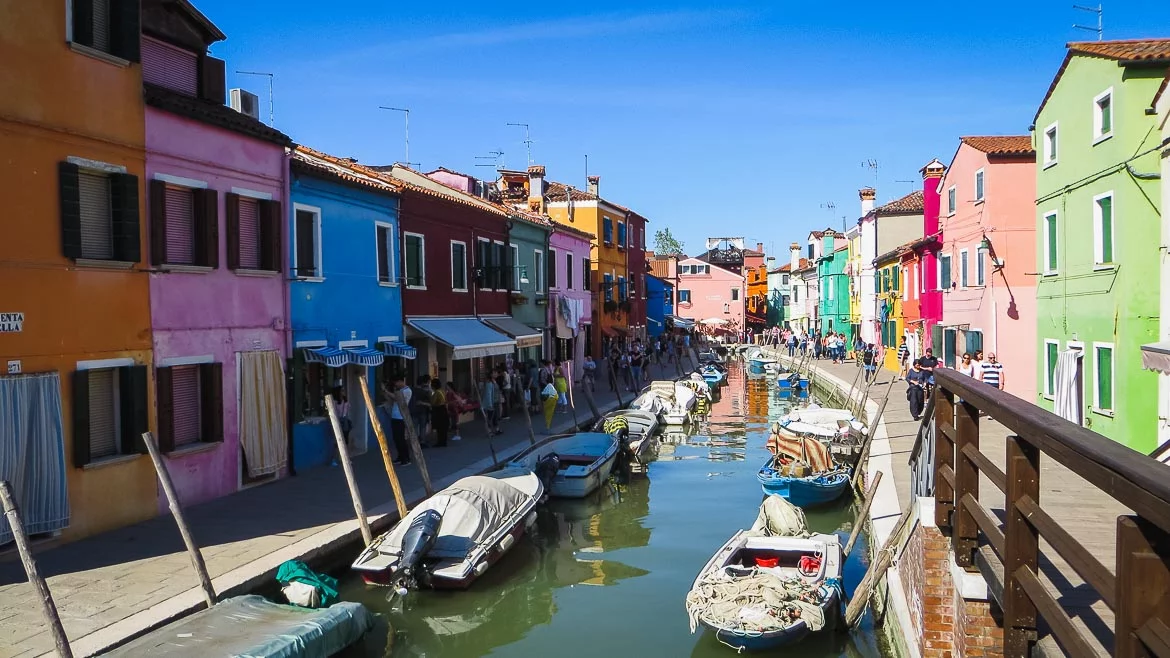
Name and Location: Day trips to islands, Venice, Italy
History and Significance: Venice’s lagoon islands like Murano, Burano, and Torcello offer a peaceful escape from the bustle and a glimpse into local traditions.
What to Expect: Murano’s glass-blowing, Burano’s colorful houses, lace shops and seafood. More secluded atmosphere.
Visitor Information: Reach by public ferry. No private boats allowed. Fewer crowds early/late in day. Limit visits to 1 or 2 islands a day.
Venice sits amid a lagoon dotted with small islands, each with its own sights and charms. Take a boat tour or water taxi to spend a day exploring the islands. Popular choices include Murano, renowned for its delicate glass-making, and Burano, filled with colorful storybook houses.
For a more peaceful island getaway, head to Torcello, the lagoon’s first inhabited island. Wander among the natural beauty here and see mosaics inside the Cathedral of Santa Maria Assunta. Escaping Venice’s crowds while island-hopping makes for an unforgettable day.
Get Lost Among the Back Streets

Name and Location: Back streets of Venice
History and Significance: Away from major sites, Venice’s back streets and hidden corners reveal everyday life, hole-in-the-wall eateries, quiet canals and architectural charm.
What to Expect: Wandering aimlessly down narrow alleys without maps. Stumbling upon galleries, shops and cafes off the beaten path. Discovering hidden Venice.
Visitor Information: Located all over Venice. Avoid overly deserted areas at night. Have a general sense of direction. Get lost and find your way!
Put away your map and wander aimlessly through Venice’s maze of narrow back streets and alleys known as calli. As you weave through residential neighborhoods away from the major tourist sites, you’ll encounter quiet canals, unassuming churches, pocket-sized piazzas, hole-in-the-wall wine bars, and shops selling local crafts or snacks.
Letting yourself get intentionally lost and finding your own way again is one of the best ways to feel like a real Venetian. You never know what unexpected corners of authentic Venice you might discover along the way.
Take an Evening Gondola Ride

Name and Location: Evening gondola rides in Venice, Italy
History and Significance: Gliding through Venice’s canals at dusk or night reveals a magical, romantic perspective with lantern-lit palaces and glowing bridges.
What to Expect: More relaxed, intimate rides under the moon and stars. Fewer crowds and traffic on surrounding boats. Choose a route away from San Marco.
Visitor Information: Book an evening ride in advance. Rates are similar to daytime. BYOB option. Dress warmly and avoid overload.
For an especially romantic experience, book a serenata, an evening gondola ride. You’ll float through dimly lit canals and under bridges as your gondolier sings traditional Italian songs like “O Sole Mio.”
The mysterious, moonlit atmosphere of Venice’s waterways after dark is unmatched. As you gently glide past ancient buildings, enjoy the city’s peaceful charm from a unique vantage point. Evening gondola rides typically last 30-50 minutes—sit back, relax, and savor the magic.
Experience Carnevale di Venezia

Name and Location: Carnevale di Venezia, Venice, Italy
History and Significance: Venice’s Carnival dates back centuries, with masks, costumes, parades and street entertainment before Lent. One of the world’s great festivals.
What to Expect: Elaborate masks and costumes everywhere. Concerts, street food and vibrant energy throughout Venice over several weeks in February/March.
Visitor Information: Peak crowds just before Lent. Reserve hotels way in advance. Tours and mask making workshops available. Wear layers for outdoor events.
Plan your visit to Venice to coincide with Carnevale di Venezia, the city’s annual pre-Lenten carnival, and you’ll be immersed in one of the world’s most spectacular festivals. For two weeks leading up to Ash Wednesday, Venice comes alive with parades, vibrant costumes, mask-wearing revelers, street performances, lively music, and fireworks.
The costumes and masks harken back to Venice’s days as a powerful Republic. Whether you dress up and join the festivities or simply people-watch the elaborate pageantry, experiencing Carnevale is a Venice highlight. The 2024 festival runs from February 4th through the 21st.
See a Performance at La Fenice
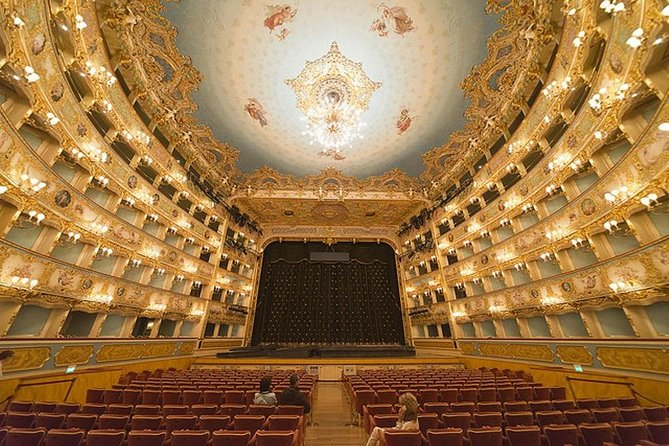
Name and Location: La Fenice Opera House, Campo San Fantin, Venice, Italy
History and Significance: La Fenice has hosted premieres of famous operas and today stages classics in a luxurious, historic setting. One of Italy’s top opera houses.
What to Expect: Attending an opera performance in the ornate theater. Optional backstage tours on non-performance days. Tickets book up early.
Visitor Information: Located north of Piazza San Marco. Theater tours daily. Performance tickets sold months in advance online. Evening dress code.
Dating from 1792, Venice’s opera house Teatro La Fenice is regarded as one of the world’s premier venues for opera. After being destroyed by fire and rebuilt, it reopened with a performance of Verdi’s “La Traviata” in 2004. Attending an opera or classical concert here, surrounded by sumptuous interior design, is a must for music lovers.
With impressive acoustics, talented musicians, opulent boxes, and a devoted audience, an evening at La Fenice is spellbinding. Tickets can be hard to get, so book well in advance to experience the magic of this storied opera house.
Shop for Venetian Masks

Name and Location: Venetian Mask Shops, throughout Venice
History and Significance: Venetian masks have been handcrafted locally for centuries, originally for masquerade balls and later Carnival. Intricate designs and ornamentation.
What to Expect: Browsing the myriad mask styles and purchasing decorative or classic masks like the Bauta and Moretta. Seeing craftsmen at work.
Visitor Information: Mask shops found across Venice. Prices range dramatically so comparison shop. Check workmanship and materials. Crafty souvenirs.
Venetian masks were originally worn during Carnevale as a way to obscure identity and social status. Today, mask shops carry on the centuries-old craft, selling masks of all varieties. Even outside of Carnevale season, a visit to Ca’ Macana, Papier Mache Masks, or another local workshop lets you see artists at work painting intricate masks.
Bring home a feathered Colombina mask, golden Volto mask, white Doctor mask with a beak-like nose, or another uniquely Venetian souvenir. You can find cheap versions at many shops, but support local artisans by purchasing a quality handmade mask.
Explore Venice’s Teeny-Tiny Islands

Name and Location: Smaller Islands of Venice
History and Significance: In Venice’s lagoon, smaller isles like Sant’Erasmo, La Certosa, and San Francesco del Deserto offer glimpses of nature, history and local industry.
What to Expect: A more laid-back experience, lonely landscapes, strolling around churches and farms, eating at waterside restaurants.
Visitor Information: Reached by public ferries from Fondamente Nove. Limited amenities so plan accordingly. Avoid Sundays when most are closed.
While most tourists flock to the main islands, some of Venice’s tiniest islands offer a tranquil escape. Islands like San Francesco del Deserto and San Giorgio Maggiore see comparatively few visitors. Both are home to historic churches, along with serene canalside paths and gardens.
Another tiny island, La Certosa, feels worlds away yet is easily accessible by vaporetto. Walk the peaceful grounds of the former monastery, now an art museum, for a taste of island solitude without straying far from central Venice. These pint-sized islands reveal a quieter side of lagoon life.
Dine on Cicchetti and Wine

Name and Location: Cicchetti bars, Venice, Italy
History and Significance: Cicchetti small plates accompanied by local wine provide a delicious way to sample Venetian cuisine and mingle with residents at intimate wine bars.
What to Expect: Hopping between hole-in-the-wall bars, ordering toothpicked cicchetti creations, regional wines. Lively atmosphere and a local Venice experience.
Visitor Information: Traditional in the evenings. Popular areas include Cannaregio and the Rialto area. Pay as you go. Have small bills.
When hunger strikes, there’s one Venetian dining tradition you must try: cicchetti! These small snacks or side dishes are the Venetian version of tapas. They’re usually served at bàcari, casual wine bars abundant in Venice. The array of cicchetti available includes bruschetta, roasted meats and seafood, fried or marinated vegetables, cheese, and crostini.
For the ideal Venetian experience, go on a cicchetti crawl and sample bites accompanied by a glass of local wine at several different bàcari. Prices are affordable, making cicchetti an ideal intro to Venetian cuisine and wine. Popular areas to bar hop include Cannaregio, Castello, and near the Rialto Market.
Savor Seafood
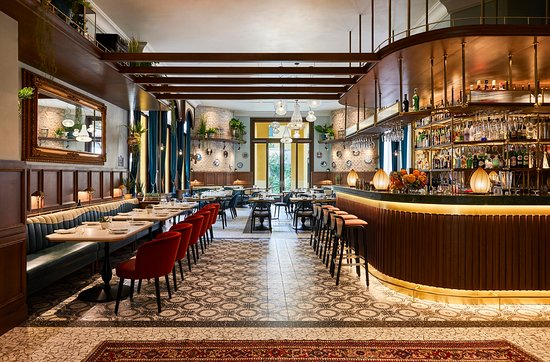
Name and Location: Seafood in Venice, Italy
History and Significance: Venice has an intimate relationship with the sea, evident in its beloved seafood dishes likes crab, squid ink pasta, grilled fish and baccalà.
What to Expect: Feasting on the fresh catch of the day simply prepared. Tasting seasonal specialties, house wines at fish-focused eateries.
Visitor Information: Seafood restaurants concentrated in San Polo and Cannaregio. Reservations recommended. Check menus and prices posted outside.
Dining in Venice involves feasting on the bounty of the sea. Local specialties incorporate seasonal, fresh-caught fish and shellfish from the Adriatic and lagoon into delicious dishes. Classics include sarde in saor (fried sardines marinated with onions),moleche fritte (fried soft-shell crab), branzino (sea bass), orata (gilthead bream), and frittura mista di pesce (mixed fried seafood).
For an upscale indulgence, book a table at a restaurant like Osteria Bancogiro or Al Covo that offers creative takes on regional cuisine and fine Italian wines to pair. Be sure to try fresh pasta dishes and risotto as well. Venetian seafood really shines when done right!
Admire the Views from San Giorgio Maggiore

Name and Location: San Giorgio Maggiore, Venice, Italy
History and Significance: This island across from Piazza San Marco offers beautiful vistas over Venice. Located here is the Church of San Giorgio Maggiore.
What to Expect: Taking the ferry over to ascend the bell tower for breathtaking panoramas over the lagoon and city. Admiring the Palladian church.
Visitor Information: Short ferry ride from San Marco. Open daily. Separate tickets for tower and church. Less crowded than other islands.
For one of the best panoramas of Venice’s skyline, take the vaporetto over to the island of San Giorgio Maggiore. Visit first thing in the morning or in the late afternoon to avoid the biggest crowds. Take the elevator up the 323-foot-tall bell tower for an unforgettable 360° view across the lagoon and city.
Gazing out at the church domes, distant Alps, and endless sea of Venetian rooftops is mesmerizing. After taking in the vista, explore the magnificent Church of San Giorgio designed by Italian Renaissance architect Andrea Palladio. The island’s serene setting makes it a peaceful place to linger.
Conclusion
From its labyrinthine canals and alleyways to its iconic landmarks, Venice is truly a one-of-a-kind city. In 2024, make time to ride through the canals on a gondola, get lost among the back streets, savor delicious seafood, and experience the magic of Carnevale. Wander the city early in the morning or late at night when the crowds thin out. However you explore Venice, visiting this floating world is an unforgettable dream come true for any traveler or art lover.

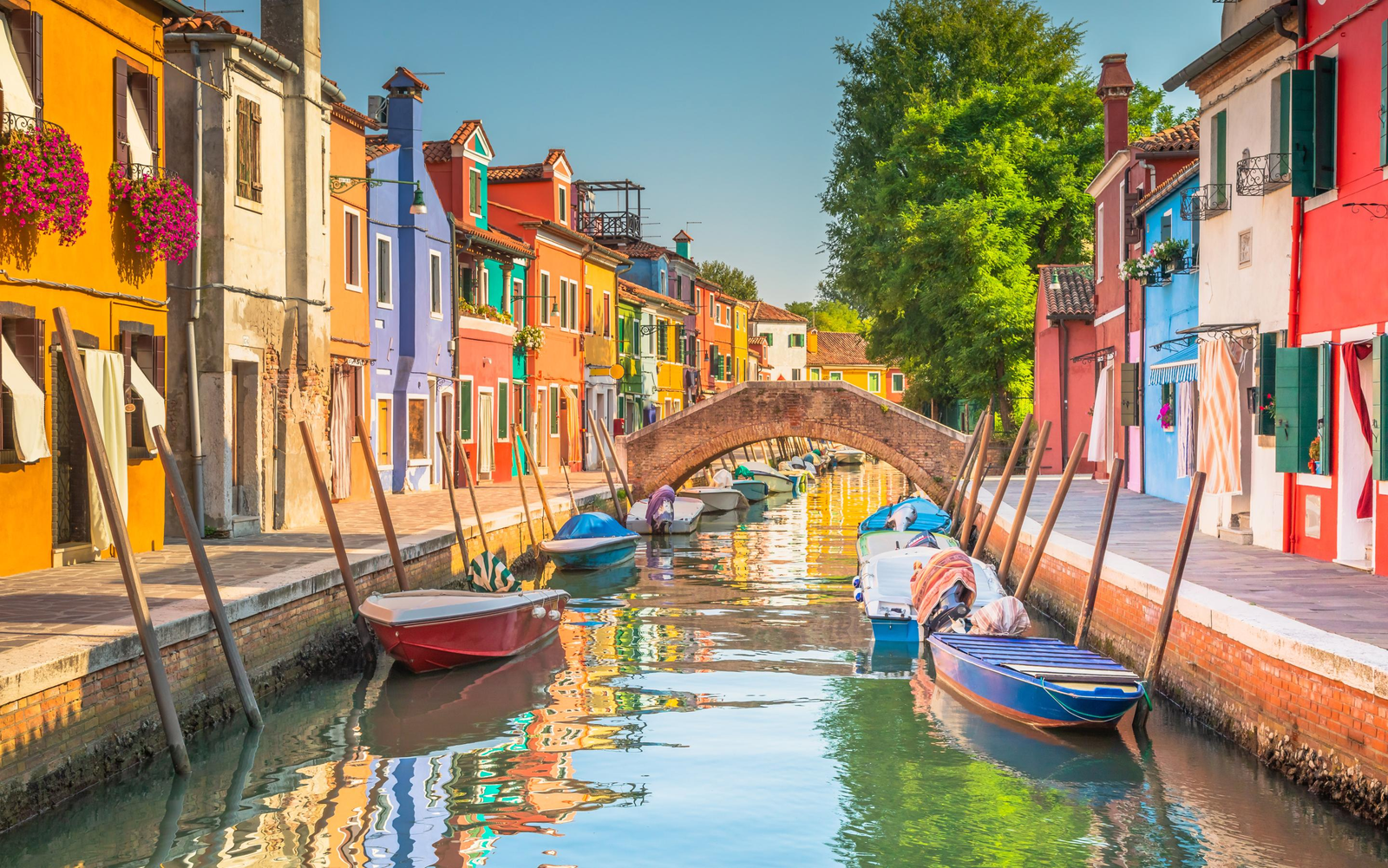
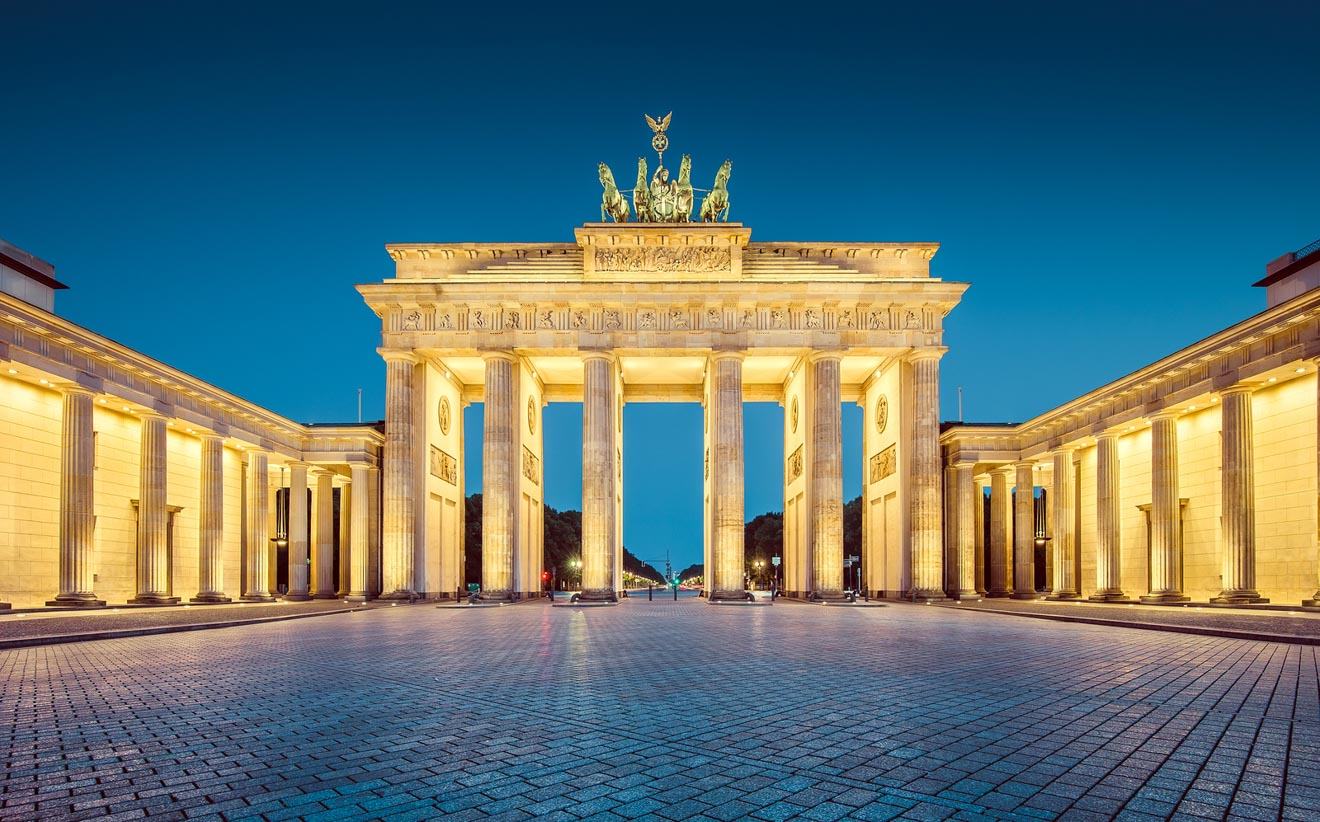

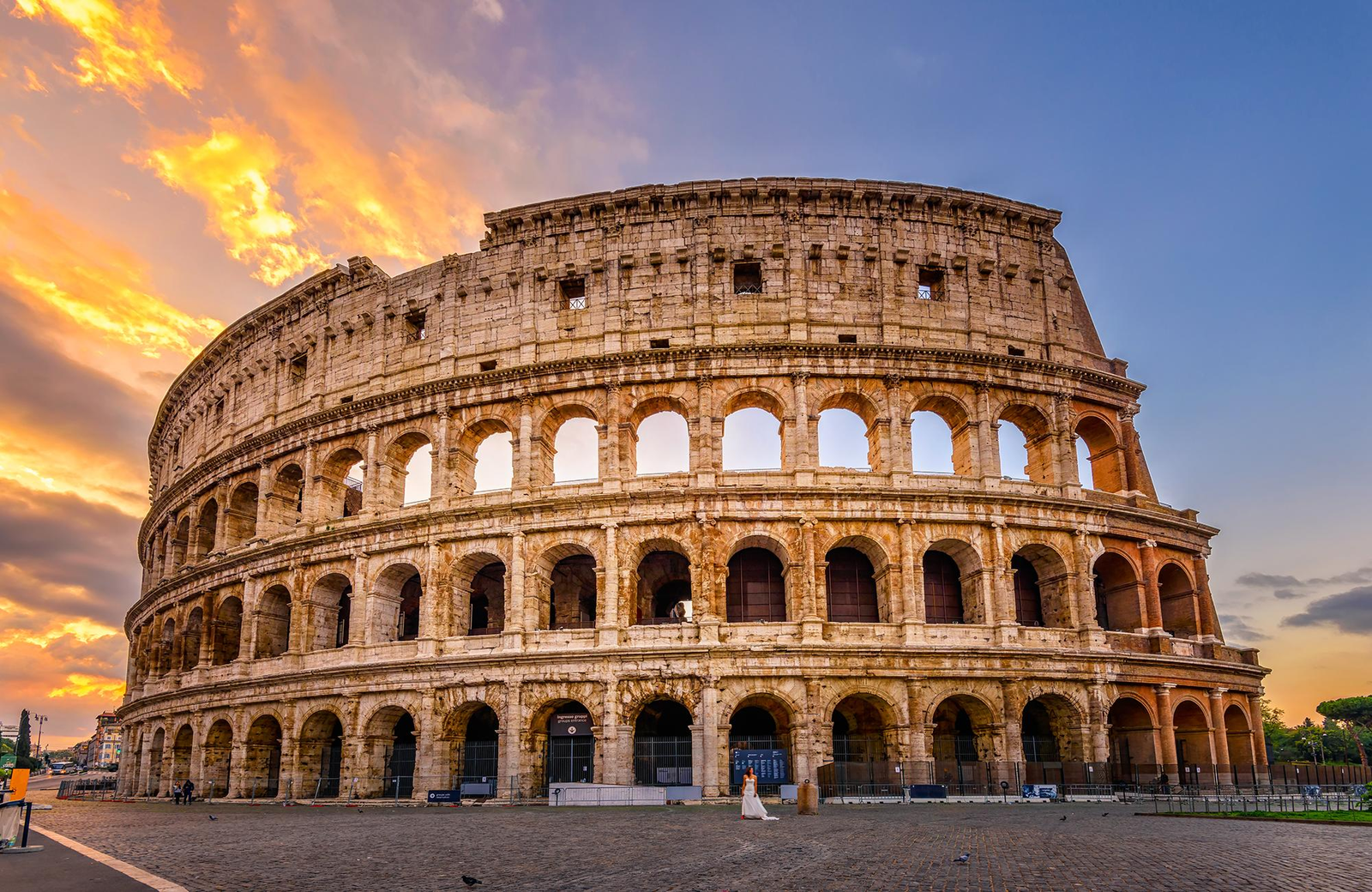
Join the Conversation